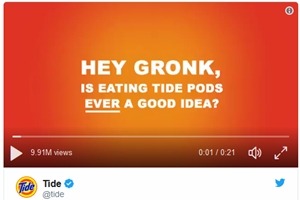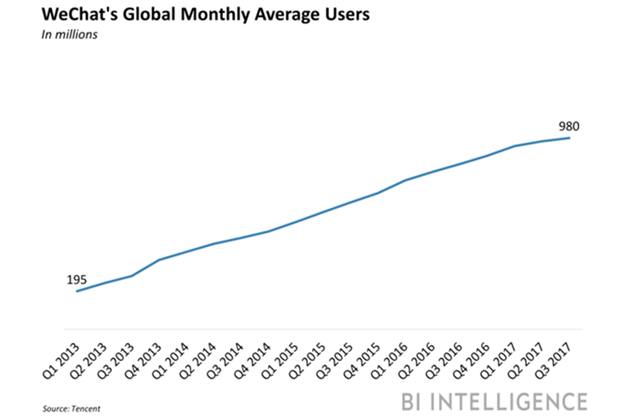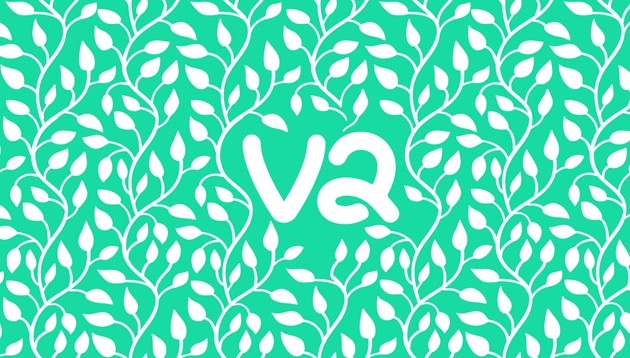Author: Christian Neri / Source: MarketingProfs


This week’s ‘Skim: all about miniprograms… how they’ll replace apps and why they’ll probably change the course of social media; Snapchat aims for more visibility by making content shareable outside its app; what we know of new app v2 from Vine’s founders; Yahoo Finance launches a social media app for saving money; Snapchat ups its analytics game with app-install ad capabilities; how Foursquare took an enormous risk, and how it’s started to pay off; why Rupert Murdoch thinks social networks should pay news publishers for content, and why that might not be a bad idea; and much more…
Skim for the big social media subjects!
1. Will miniprograms replace apps? Yes, if WeChat has its way.
WeChat is touting the success of miniprograms—stripped down versions of apps that live within the WeChat messaging platform so users don’t have to download them separately—by marking the fact that it now offers 580,000 of them. That’s a big deal in more ways than one, particularly when you consider that the App Store offered only 500,000 iOS apps from 2008 until 2012.
Developers and consumers alike are warming up to the idea of an app-free world, with one million developers now looking to fulfill the needs of users who’d like one tool to access everything. WeChat users already use the app as a central hub, doing everything from texting friends and ordering groceries to booking doctor appointments and hailing cabs.
Miniprograms are likely indicative of where social will move in the future, and if we had any money to bet we’d bet big that Facebook’s already knee deep in developing similar, one-app-fits-all capabilities on WhatsApp before WeChat can fill the void in Western markets, particularly the US.

Plain and simple, Snapchat’s been struggling to grow its user base, and so the social network’s latest plan lies in taking down the walls that keep its content within. That’s right, soon enough stories from official accounts will be shareable outside the app via a link, meaning celebrities’ ephemeral snaps can be spread further and regular users who contribute to a public group stories could see their content make it elsewhere on the Web.
The move makes sense: Content that’s embeddable by publishers and others on the Web helped make YouTube the biggest video platform in the world and Twitter a common source of news commentary.
What’s Snapchat to gain in all of this? More visibility outside its app, new insights as to where their content is spreading, and the possibility of monetizing that content with ads.
3. The makers of Vine are back with a new app. Here’s what we know so far.
Defunct Vine might still be owned by Twitter, but that doesn’t stop its founders from taking another stab at hitting it big with a video app with a logo eerily resembling its predecessor’s. v2, as Vine co-founder Dom Hofmann refers to it, is probably on path for a spring or summer launch this year, and it will likely feel familiar to former Vine users while also bringing with it a fresh approach.
No word on whether the final name of the app will be v2, but the company’s not wasting time building hype, and it has already opened a minimalistic Twitter account to share news.
Instagram might be taking over from Snapchat in more ways than one, but none of the major platforms is currently mastering the 6.5 second videos that made Vine famous. That’s where v2 sees its advantage, but we’ll have to wait to see what else the team has in store for us.

Yahoo is bringing social media to savings with its new credit card replacement app, Tanda. The app enables small groups of either five or nine people to pool funds together in one big pot, with…
Peter Bordes Jr
Founder & Managing Partner Trajectory Ventures. Lifetime entrepreneur, CEO, Board Member, mentor, advisor and investor.
Obsessed with the infinite realm of possibility in disruptive innovation driving global digital transformation in technology, cloud-based infrastructure, artificial intelligence, data, DevOps, fintech, robotics, aerospace, blockchain and digital media and advertising.

